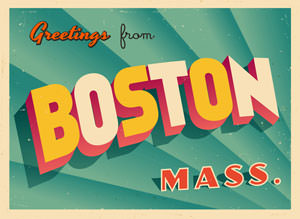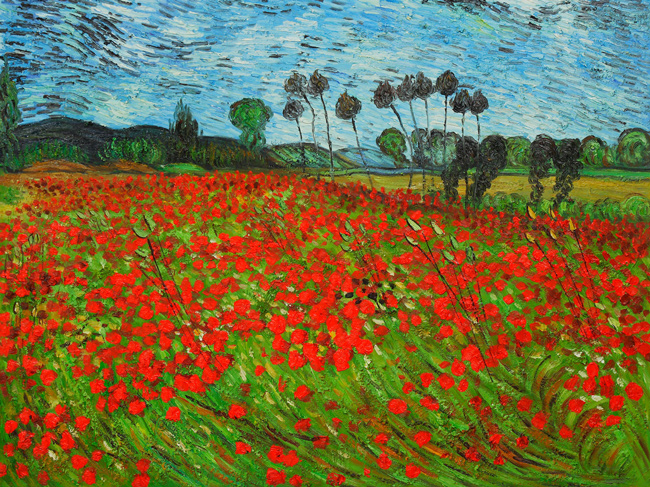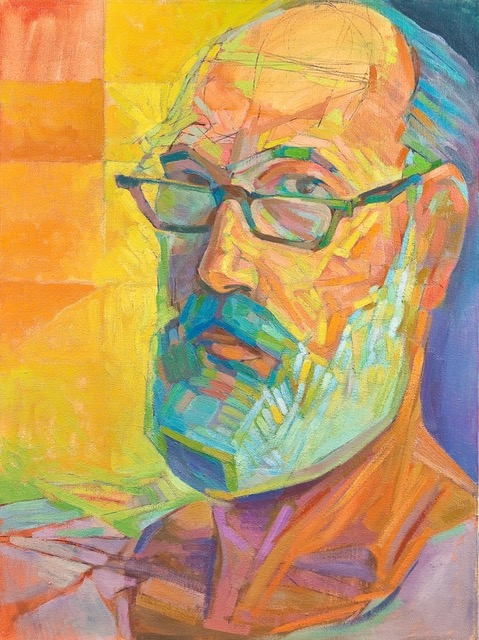After I graduated from the Ruskin I went back to the States. I wanted a job that involved drawing or painting so I could pursue my studies in art for my own purposes, and I could build a body of work.
I had a cousin in a Boston suburb who worked in advertising. The economy in 1960 was terrible. Instead of being able to get a job, everyone was losing jobs. I asked my cousin if he could recommend any exhibit houses I could apply to where I could earn a minimum wage. He mentioned something called MadeWell down by the docks. They did booths that major industries ordered and shipped all over the country. Whenever there were industrial exhibitions in the city, there were people who would uncrate these booths, set them up, and get them ready. The booths consisted of four by eight panels, which would be lined up in some configuration. Many of them would have in-set television screens with continuous loop presentations from the industries. All of the panels had silkscreened copy on them. Then there were headers on the top of translucent Plexiglas, backlit, with translucent ink printed on them. They were pretty elaborate and went for many, many thousands of dollars.
My job was in the silkscreen department. I set up all of the copy and in those days, it was pretty primitive. Today with computers, it would be a cinch. I had little fonts on long acetate strips on spools. I would move the strip around until I had the next letter and expose it. I had film behind it. And once I had that, I could enlarge it through a projector to have it any size I wanted. Then I could set it up on acetate copy in positive into a vacuum screen and expose the film. That would create a stencil you used to print on the panels. It wasn’t anything too complicated, but you had to know what you were doing. You had to know about inks. You had to know about two-man squeegees because for some of these four by eight panels, two of you got on the panel and you walked eight feet and you had to keep the leading, right angle edge pushing the ink through the screen evenly or you would have to wash the panel off and start again. I got pretty good at it. We were doing fine stuff.
When you say ‘silkscreen process’ to nearly anyone, they imagine you are doing labels on bottles a hundred thousand at a time, and you are using automatic equipment. But we only made one print. And then we had to clean out the screen. I really liked it. I thought it was terrific!
I worked in the day and I could go home on Columbus Street at night and go to the corner of my room where I had my easel and palette. Then I could paint. There was a toilet and shower down the hall from my room, and a little kitchen area in the corner. My Cushman motor scooter got me to work. I was content. I was painting; I was drawing. I wasn’t far from the Boston Museum of Fine Art, and I was submitting things into competitions, getting into shows and occasionally winning a prize. I didn’t sell anything at that time.
There was a young Italian-American kid who was brought in and assigned to me. He had recently married an Italian girl. He was frightened out of his wits with this job, so I took him under my wing and taught him all he needed to know in my department. He was very grateful. Now, instead of being used as just a gofer, he had skills. He had something he could sell. I was a decent teacher.
Out of gratitude, he invited me to his home for an Italian meal with his young wife, who was a very fine cook. The couple also invited a friend from Italy. She and I struck up a friendship and started dating, then moved in together. We ended up getting married in Boston, and were eventually able to return to Europe with our infant daughter, Catherine.



